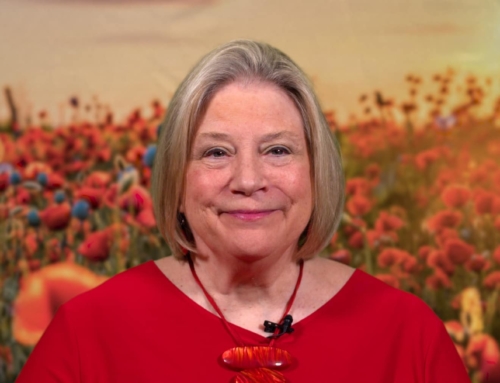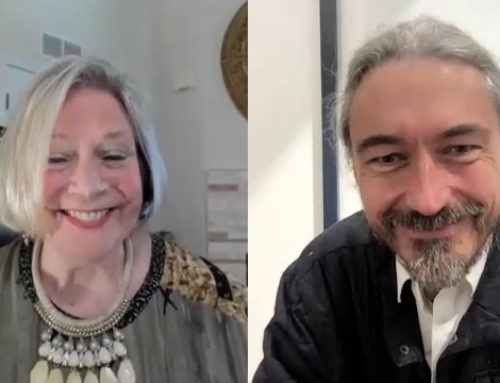
While you may be excellent at interpreting the goings-on of your clients’ brains, how thoroughly do you understand the inner workings of your own brain, especially in session with your clients?
In this video, I talk about:
- What might be making it more difficult for you to stay “in the zone”
- How evolution affects our brain function
- Presencing safety to your clients
- How you can help clients stay in a positive, new experience
19 Comments
Comments are closed.







Hi Diane, Thanks for your helpful and positive words. Will need to watch this a few times for it to sink in properly. Will be helpful to think about when working with my clients.
Hi Diane:
Nice to “meet” you 🙂
Some students of yours recently let me know that you’ve mentioned my Amygdala Whispering Challenge in your coursework and that’s how they found me, so thank you for that!
I enjoyed the props and toys you included in this video; they are a huge part of my approach to untangling the web of engaged amygdalae–especially loved the Slinky!
Thanks again for the mention, and all the best in your endeavors!
Deb
Ahhh, I’m feeling more relaxed to see that my old and well developed corrective experience, slinky and taffy-stretching skills are essential to the “new” brain science. Thanks, Diane.
Dear Diane,
Such a helpful fun and clear video. Your teachings hold such simplicity making it easier to digest and apply in our work ( not to mention our lives!).
My life is full but my intention is to make you and Dare more part of it!
As always and with much appreciation,
Shanly
Hi Diane,
I’ve been experiencing this in my therapy with Stephanie Sisson (SE Practitioner).
We’ve begun to make it a kind of *tradition* to stay, stay in the felt sense of positive moments.
This seemed contrived to me at first, until I became curious about what it was like to physically *feel good* about something….besides that rush of endorphins that happens when you run distance, for example. What I have a greater need of, is experiencing that feel-good sensation about PERSONAL INTERACTIONS…staying with a sincere thank you….or a sense that someone, anyone, likes me. Those are the sensations that are missing from disorganized, ambivalent, and avoidantly attached (or detached) persons.
Thanks Diane You really pulled a lot of things together to clarify the process of making a shift in the brain, and experience of the client. I can attest to this process personally. it has worked for me. I have felt and experienced such a shift in myself in my own Therapy. It really does work to hold both the trauma and the positive, at the same time – does rewire. It has made a real difference for me!
Diane,
Thank you for loving what you do, for your deep commitment to teach and to heal as humanity.
You are like Mary poppins, always have a bag full of stuff to teach in a joyfull way.
Please continue doing this videos. It is amazing how much we learned in 5 minutes!
Diane, I find your method of presenting to be spontaneous, authentic and genuinely wanting to help trauma clients to maximize their potential to the highest possible degree (that is my Occupational Therapy background talking). I am new to your website, however I recently also watched your interview with Caryn Scotto D’Luzzio, and this confirmed your consistently authentic manner in your presentations, and I am sure in your work with clients too!!
I am working through my own significant past traumas, including Intergenerational (IG) Trauma. So I have been educating my young adult son, in simpler terms, about neurobiology of the traumatized brain, and how neuroplasticity works to “rewire” the brain and create new neural pathways. You webinar gave me ideas for more visual tools to use with him, and also more theory to translate to him, so we can continue our attachment repair and co-regulation, while still practicing self-regulation, to avoid IG trauma triggers. This will enable us to create more peaceful enjoyable experiences in our home environment, on which to focus (30 sec intervals), in reprogramming our brains, to resolve lifelong traumas.
Hats off to you for bringing a wealth of knowledge to SE clinical practice. I am now also working on SE training (along with self-healing), to help trauma clients from my “lived experience.”
dear Diane you have a way of explaining things that are very clear and so practical I like to take things into the room to illustrate a point and it provides laughter and lightness to do so around serous topics
I find the work then can become more enjoyable for both client and myself I think I am off o
To find a bowl and sieve and slinky too
Your creativity is a gift
Many thanks for your generosity
Helen
I really like your visual presentations of the sieve and slinky to assist us in communicating with patients and even to grow in a deeper sense of ourselves. This is awesome work but very challenging for both patient and therapist.
Hi Diane,
I always look forward to you emails and videos they are very helpful and I always learn something new such as today. The 30 second positive experience hold was so interesting as well as the illustration on how positive experience can run like water through a strainer and creating a corrective experience.
Hi Angie and thanks for your kind words!
I also want to thank Rick Hanson for his understanding and support of holding positive experience as well. I have been talking about that since the early 80’s and now he quotes research to support it in his book on Happiness.
Love any new ideas for more Corrective Experiences you might have as I want to create a huge library of therapists so we can all try them out in therapy with our clients!
Warmly, Diane
Hi Diane,
I love sharing brain science with my clients to help them understand why they behave the way they do, and offer hope to change by learning new thoughts/behaviours to develop new neuropathways in the brain.
I loved the props you showed to get the message,particularly the brain.
Is this available for purchase online?
Best,
Vij
HI there VIJ,
The props are just stuff I have found running around the planet so don’t have a supply of them but toy stores are great resources and I find folks really respond to them – (me, too!)
I studied Super Learning in the 70″s and they suggested trying to use all channels of learning for the best and most efficient integration so I try to use that a bit when I can!
And besides, it’s more FUN!
Great to hear from you again! 🙂 D
As a BSW (Social Worker), I learned that we need to focus more on the feeling surrounding what would have been helpful after the trauma occured rather than on the truma itself. Get the client thinking about their (good) feelings so that the brain can capture those feelings and with neuroplasticity of the brain, rewire the bad into the good feelings.
Hopefully, this makes sense
Dear Frances – Yes that DEFINITELY makes sense to me!
I think we actually help our clients when we do both – excavate the wound and nourish the health in the system in a balanced way so they can integrate an overwhelming life event in a non-overwhelming way.
It helps alot to understand how the ANS processes difficult situations and emotions as well as having a handle on understanding somatic strategies, attachment relational focus and SELF and INTERACTIVE REGULATION. All are so helpful!
Great to hear from YOU!
Warmly, diane
Thank you so much Diane. I appreciate the reminder of why we ask clients to deepen their experience with exploring the felt sense when they are experiencing “feel good” emotions and insights. I loved the water through the sieve demonstration.
Hi Rebecka,
Yes, I know isn’t that fun and showing it this “waterworks” way help my visually oriented brain remember to keep a client focused on the positive longer in sessions too!
Neuroscience tells us we have to challenge those ingrained neural networks long enough that new ones begin to form and wire in to initiate change.
Holding the positive experience in contrast to the wounding and suffering interrupts the associative cortex so you don’t get that “domino effect” of trauma re-enactment patterning repeat itself automatically through association and embodied memory. It essentially functions as a pattern interrupt for the beginnings of effective shift.
I take this as a sure sign we are designed for adaptation and transformation!
Warmly, Diane
Hi Diane,
Thank for integrating so much useful information into a succinct and thought provoking video.
Keeping abreast of how neuroscience can help us is so important.
Loved the visuals – Great again!!